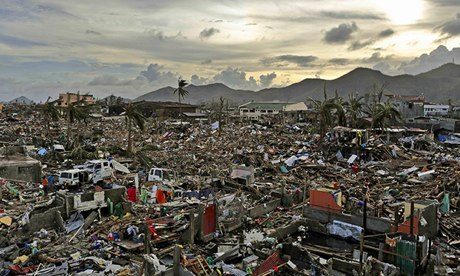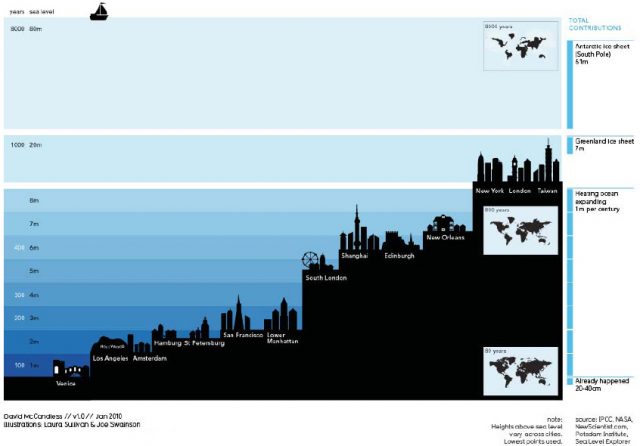Those living in East Asia’s coastal areas will be buffeted by more intense typhoons in coming years as a rising trend in western Pacific Ocean temperature continues, according to a groundbreaking climate research paper published in Nature Geoscience.

G20 leaders have been meeting this past week in Hangzhou, a historic coastal city in China’s southeastern Zhejiang province. The twin issues of climate change and sustainable development number among the key issues discussed.
Adding substantial momentum to adoption and enactment of the UNFCCC Paris climate accord, both Chinese President Xi Jinping and U.S. President Barack Obama announced their respective countries’ conformance with the international agreement, the ambitious goal of which is to limit global warming below 2°C (3.6ºF) over the course of the 21st century.
Linking climate change action and sustainable development

UN Secretary General Ban ki-Moon opened the G20 Hangzhou Summit by urging all G20 leaders to take strong action to address climate change and link it to achieving the UN’s recently adopted Sustainable Development Goals (SDGs) and strategic blueprint for international development.
“For the first time in the history of the G20, the Hangzhou draft communiqué is now focusing on this Sustainable Development Action Agenda as one of their most important [aspects of] the outcome document,” the UN’s chief executive said at a press conference before the summit’s opening.
The effects of the rapid rise in mean global temperatures underway are taking an increasingly heavy toll around the world. One of the most densely populated regions in the world, the actual and potential costs are particularly high in East Asian coastal cities and provinces.
The rising costs of climate change
An estimated 133 people per square kilometer live in East Asia, about three times the world average population density of 45/km2. More than 1.5 billion call the region home. That’s about 38 percent of Asia’s and 22 percent of global population, according to official statistics.
Inconsistencies among available data sets have made it difficult to determine whether or not the intensity and frequency of typhoons that make landfall across the East Asia region have been increasing. Employing cluster analysis to reconcile the differences, Wei Mei and Shang-Ping Xie of the Scripps Institution of Oceanography determined that the intensity of typhoons that have made landfall across the East and Southeast Asia has increased 12-15 percent over the past 37 years.
The proportion of the most intense Category 4 and 5 typhoons has doubled or even tripled, according to their research results. The researchers attribute the greater intensity of typhoons to warming coastal Pacific Ocean waters. They expect the trend to continue.
“The projected ocean surface warming pattern under increasing greenhouse gas forcing suggests that typhoons striking eastern mainland China, Taiwan, Korea and Japan will intensify further. Given disproportionate damages by intense typhoons, this represents a heightened threat to people and properties in the region,” they wrote.
A link between Western Pacific sea levels and surface temperatures
In other groundbreaking climate science, University of Arizona earth scientists have found that Pacific Ocean sea level rise can be used to estimate global warming. Average global temperatures will rise as much as 0.5ºF (0.28ºC) by year-end 2016 as compared to 2014’s level, they forecast.

Global mean temperature rose 0.32ºF (0.18ºC) in 2015, according to the researchers. Their forecast for 2016 is proving to be accurate thus far through the year, lead author Cheryl Peyser was quoted as saying.
Scientists have known that sea levels in the Western Pacific and global temperatures vary from year to year, but no one had determined whether or not a correlation between them exists. “We’re using sea level in a different way, by using the pattern of sea level changes in the Pacific to look at global surface temperatures – and this hasn’t been done before,” Peyser explained.
The research team found that the rise in global temperature slows when sea level in the western Pacific increases more than average. That was the case from 1998-2012, a so-called hiatus in rising global temperature that has puzzled climate scientists and led to criticism from climate change deniers.
Sea level in the western Pacific increased four times faster than the annual average during this period, which led Yin to wonder if they were related. It turns out they are.
Establishing the correlation between sea level changes in the western Pacific and global temperature enabled the researchers to build a predictive model for future global mean temperature.
“During the global warming hiatus, more heat was being stored in the deeper layers of the western Pacific Ocean, muting warming at the surface,” according to the researchers. “Warmer water expands, and that stored heat contributed to extreme sea level rise in the western Pacific during that time.”
Conditions began changing in 2014 when the Pacific Ocean’s tilt started to flatten out as the climate cycle changed to an El Niño pattern, they explained. The heat stored in the ocean was released, which in turn warmed the Earth’s surface and reduced sea levels in the western Pacific.
“Our research shows that the internal variability of the global climate system can conceal anthropogenic global warming, and at other times the internal variability of the system can enhance anthropogenic warming,” Yin said.
*Image credits: 1) Tacloban after Super-Typhoon Haiyan, Lunarplanner.com; 2)UN; 3) IPCC, NASA, et al
Featured image: Stuart Rankin, courtesy Flickr


